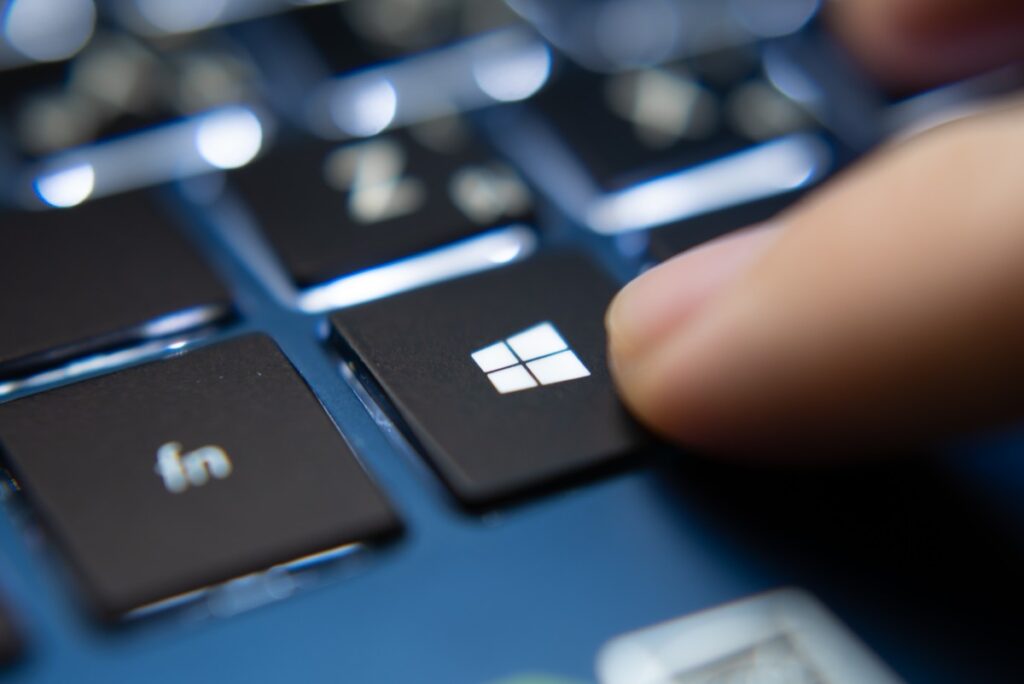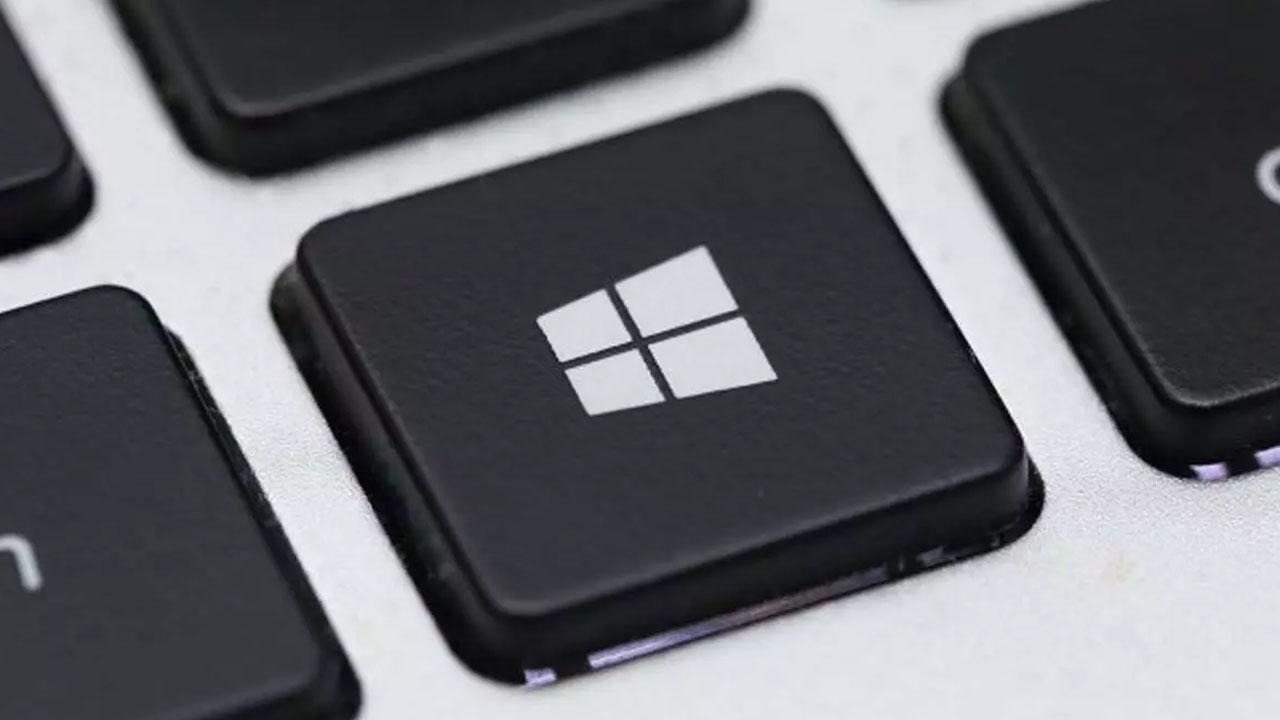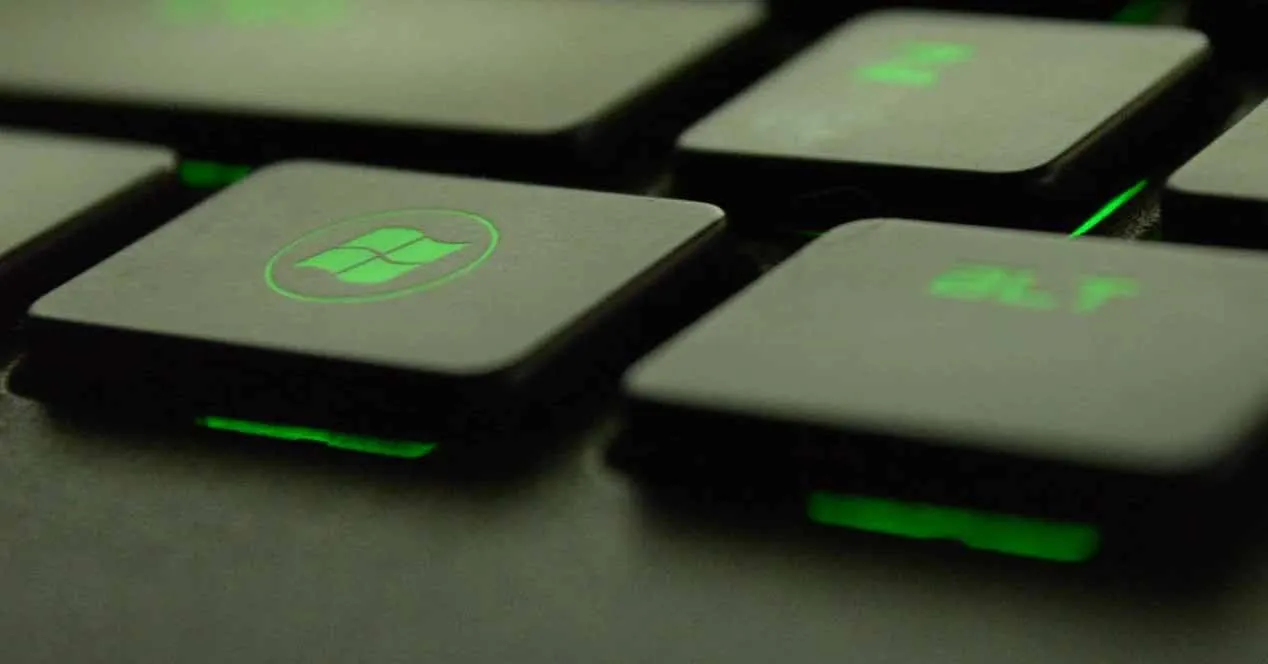- The Windows key may fail due to dirt, configuration, blockage, or malfunction.
- There are quick options to rule out physical problems and adjust Windows and keyboard settings.
- Solutions range from cleaning to using software and remapping keys if the damage is irreversible.

The Windows key is a small shortcut to numerous quick functions on your computer. Although its use isn't essential for everyday use, losing it limits many possibilities. But don't worry, If the Windows key doesn't work, there are solutions.
In this article we compile the causes, from the silliest mistakes to the most complex causes, and of course the solutions that we can apply in each case. All so you can regain control over your keyboard and your computer.
Why the Windows key may stop working
Before we get down to work, it is important to understand where the problem may come from. When the Windows key doesn't work, it could be due to the following:
- Physical failure of the keyboard or the key itself, often due to dirt, wear or breakage of the mechanism.
- Operating system deconfiguration, usually attributable to updates, corrupt drivers, registry changes, or installed software.
- Locking by special key combinations, common in gaming keyboards or laptops with “game” modes.
- Additional software issues such as viruses, key-jacking programs, errors loading File Explorer, or conflicts after recent updates.
The Windows key not responding can happen without warning. The possibility has been added that Some keyboards, especially those designed for gamers or laptops, include a button or combination to deactivate it. and thus avoid accidental keystrokes during the game.

Initial diagnosis: Is it a physical or software problem?
The first step is to determine whether we are facing a hardware problem (the keyboard is broken) or a software problem (Windows or some program is blocking it). The most practical thing at this point is to use tools such as Keyboard Tester, a simple and effective website to check if the Windows key press is detected.
Use this website to test the Windows key. If you see it light up when you press it, the problem is a software problem; if not, the keyboard is likely damaged. Remember to also test in other programs, and even connect another keyboard to rule out physical failures..
Methods to fix Windows key failure
Based on our top-ranked articles, here's a detailed guide to all the possible solutions to try when the Windows key isn't working, from the simplest to the most advanced:
1. Cleaning the keyboard
Dirt buildup is a classic and easily overlooked cause., especially on laptop keyboards (scissor-type switches) and mechanical keyboards. Turn the keyboard over and shake it gently. Use a soft paintbrush or can of compressed air to remove lint and dust. If possible, remove the keycap and clean it with a dry cotton ball. On external keyboards, removing the keys is simple and very effective.On laptops, use compressed air from the sides.
2. Check and disable Windows key lock modes
Many keyboards, especially gaming models and some laptops, block the Windows key with a specific button or combinations like Fn+Win, Fn+F2 or Fn+F6Look for a lock or joystick icon on your keyboard. Consult the manual or the stickers on the keyboard itself. to locate the shortcut.
Don't forget to check if you have any software utilities from the keyboard manufacturer active. These programs allow you to automatically disable the key during games. You can also check this article. How to disable the Windows key on the keyboard, if you suspect that it is blocked by some system or software configuration.
3. Disable 'Game Mode' in Windows and on the keyboard
The operating system includes its own 'Game Mode,' which can cause conflicts. To disable it:
- Go to Start menu > Settings > Games.
- Go into 'Game Mode' and turn it off.
On keyboards designed for gaming, look for a 'Game Mode' LED or indicator and make sure it's off.
4. Reinstall or update the keyboard driver
Is the Windows key not working? Sometimes the problem is with the drivers. To reinstall them:
- Right-click the Start button and open 'Device Manager'.
- Expand the 'Keyboards' section, right-click on your keyboard, and select 'Uninstall device'.
- Restart your computer so that Windows can automatically reinstall the driver.
It's also a good idea to check for Windows updates: they can fix compatibility issues after recent patches.
5. Try another Windows user account
A corrupted profile can cause key freezes. Try creating a new account:
- Start > Settings > Accounts > Family & other users > Add another user.
- Select 'I don't have this person's sign-in information' and then 'Add a user without a Microsoft account'.
If the key works in the new profile, transfer your files and use the new account.
6. Disable 'Filter Keys' and 'Stick Keys'
Windows accessibility options may interfere with your keyboard. To check:
- Go to Control Panel > Ease of Access > Change how the keyboard works.
- Disable 'Enable filter keys' and 'Enable sticky keys'.
Press 'Apply' and 'OK'. Try the key again.
7. Remap the Windows key to another key
If the fault is physical and you do not have another keyboard, to resolve the situation in which the Windows key does not work you can use SharpKeys or similar applications to reassign the Windows function to another rarely used key (<>, ç, etc.). The process is simple and the changes are applied to the registry.
8. Check the Windows registry
Some registry settings may block the key. Make a backup before touching anything. Unlock it like this:
- Type 'regedit' into the search box and open the Registry Editor.
- Navigate to HKEY_LOCAL_MACHINE\SYSTEM\CurrentControlSet\Control\Keyboard Layout
- If you see 'Scancode Map', delete it.
- Close the editor and restart.
9. Analyze the system with SFC and DISM
You've tried everything, and the Windows key still doesn't work. It's time to use two powerful built-in tools to repair damaged files:
- Run 'Command Prompt' as administrator and type sfc / scannow. Wait for it to finish and reboot.
- If it doesn't work, use Dism /Online /Cleanup-Image /StartComponentCleanup followed by Dism / Online / Cleanup Image / RestoreHealth and restart again.
10. Use PowerShell to restore Windows functions
Open PowerShell as administrator and run:
Get-AppXPackage -AllUsers | Foreach {Add-AppxPackage -DisableDevelopmentMode -Register “$($_.InstallLocation)\AppXManifest.xml”}
This reinstalls the standard Windows components that might be affected. After finishing, restart.
11. Scan your computer with an antivirus
Malware can hijack keys or block functions. Run a full scan with your usual antivirus or Windows Defender:
- Settings > Update & security > Windows Security > Virus & threat protection.
- Choose 'Full Scan' and let the scan complete before restarting.
12. Test in safe mode
Start your computer in safe mode. If the key works in this mode, the problem is with an external application or service that's interfering. If it still doesn't work in safe mode, the keyboard is more likely damaged.
Specific solutions if the keyboard is broken or on laptops
On laptops, replacing the keyboard isn't as easy as it is on desktop computers. If a key permanently breaks, the most practical option is to connect an external USB or Bluetooth keyboard. The replacement price for a laptop keyboard is usually between 40 and 60 euros. depending on the model. Generic spare parts are available from online retailers such as Amazon or eBay.
Some keyboards allow easy key removal for thorough cleaning. If you can, clean it before considering a full replacement because the Windows key isn't working.
If the Windows key works intermittently, it's usually due to dirt, dust, or moisture that makes it difficult to touch. Lift the key (carefully) and clean it wellIf your keyboard is wireless or connected via USB, try a different port, change the cable (if possible), or check the battery charge for Bluetooth models.
Getting the Windows key to work again on your computer may take some patience, but in most cases it can be fixed. Following the steps above will allow you to quickly rule out a physical or software failure, as well as remap the function if you don't have access to a new keyboard.With these tools and tricks, your productivity and peace of mind with your PC will return to normal.
Editor specialized in technology and internet issues with more than ten years of experience in different digital media. I have worked as an editor and content creator for e-commerce, communication, online marketing and advertising companies. I have also written on economics, finance and other sectors websites. My work is also my passion. Now, through my articles in Tecnobits, I try to explore all the news and new opportunities that the world of technology offers us every day to improve our lives.


